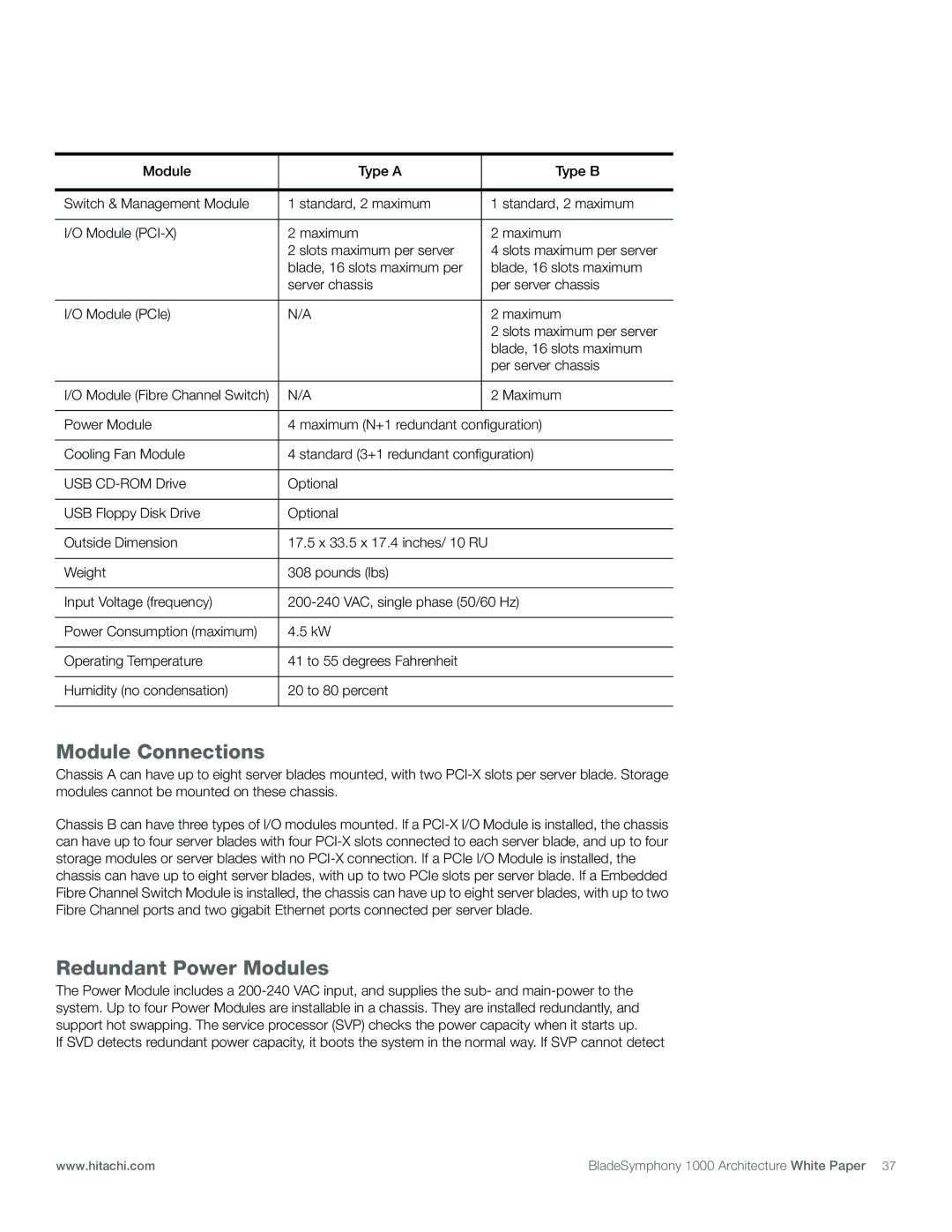Module | Type A |
| Type B |
|
|
|
|
Switch & Management Module | 1 standard, 2 maximum |
| 1 standard, 2 maximum |
|
|
|
|
I/O Module | 2 maximum |
| 2 maximum |
| 2 slots maximum per server |
| 4 slots maximum per server |
| blade, 16 slots maximum per |
| blade, 16 slots maximum |
| server chassis |
| per server chassis |
|
|
|
|
I/O Module (PCIe) | N/A |
| 2 maximum |
|
|
| 2 slots maximum per server |
|
|
| blade, 16 slots maximum |
|
|
| per server chassis |
|
|
|
|
I/O Module (Fibre Channel Switch) | N/A |
| 2 Maximum |
|
|
| |
Power Module | 4 maximum (N+1 redundant configuration) | ||
|
| ||
Cooling Fan Module | 4 standard (3+1 redundant configuration) | ||
|
|
| |
USB | Optional |
| |
|
|
| |
USB Floppy Disk Drive | Optional |
| |
|
|
| |
Outside Dimension | 17.5 x 33.5 x 17.4 inches/ 10 RU |
| |
|
|
| |
Weight | 308 pounds (lbs) |
| |
|
| ||
Input Voltage (frequency) | |||
|
|
| |
Power Consumption (maximum) | 4.5 kW |
| |
|
|
| |
Operating Temperature | 41 to 55 degrees Fahrenheit |
| |
|
|
| |
Humidity (no condensation) | 20 to 80 percent |
| |
|
|
|
|
Module Connections
Chassis A can have up to eight server blades mounted, with two
Chassis B can have three types of I/O modules mounted. If a
Redundant Power Modules
The Power Module includes a
If SVD detects redundant power capacity, it boots the system in the normal way. If SVP cannot detect
www.hitachi.com | BladeSymphony 1000 Architecture White Paper 37 |
